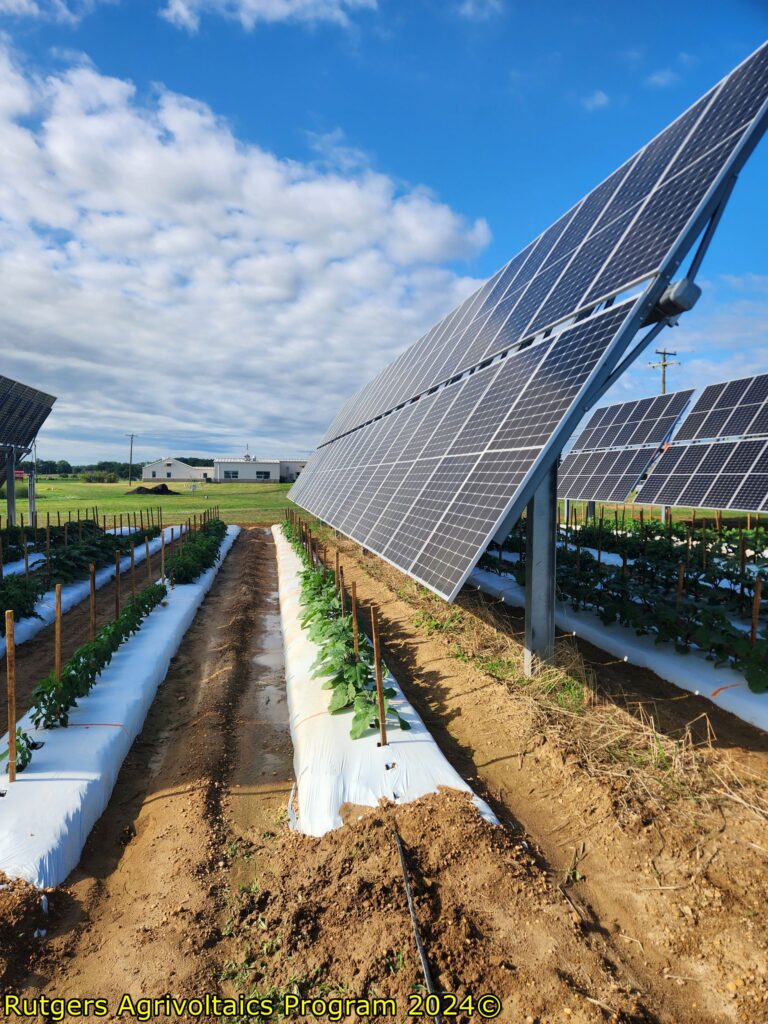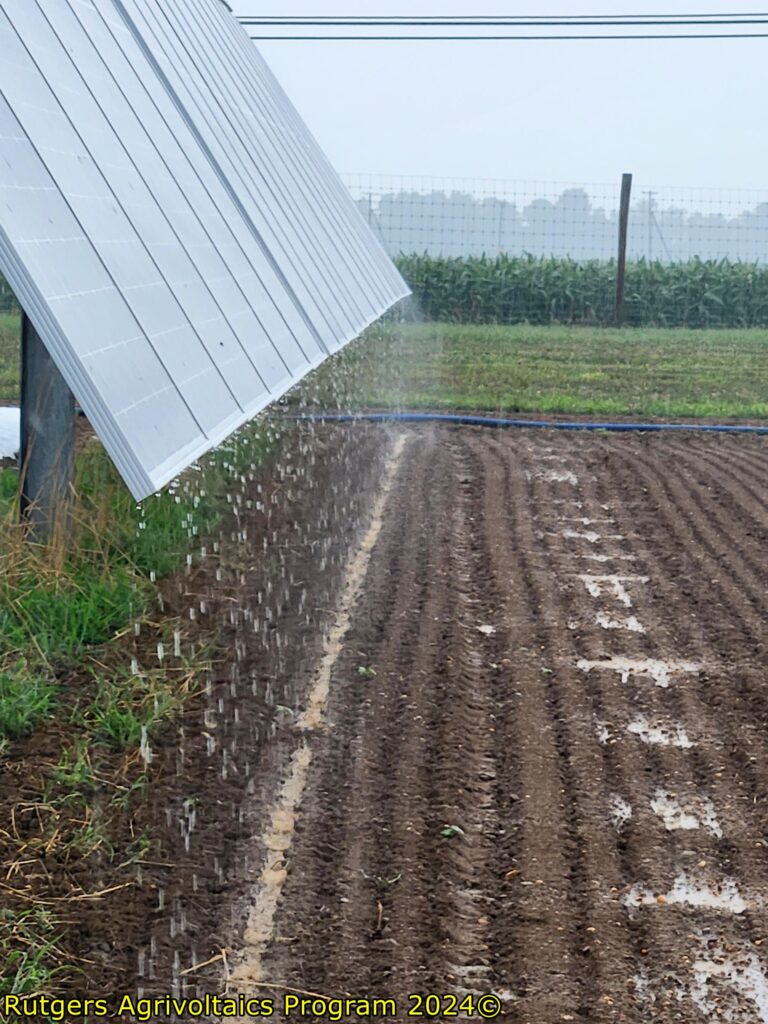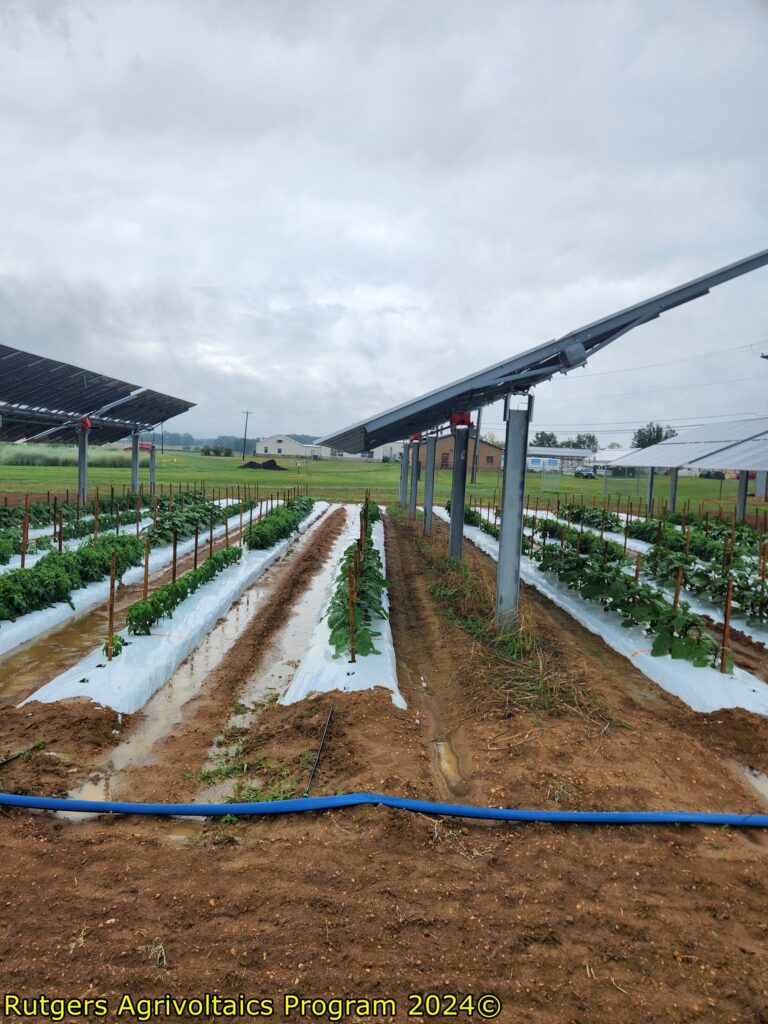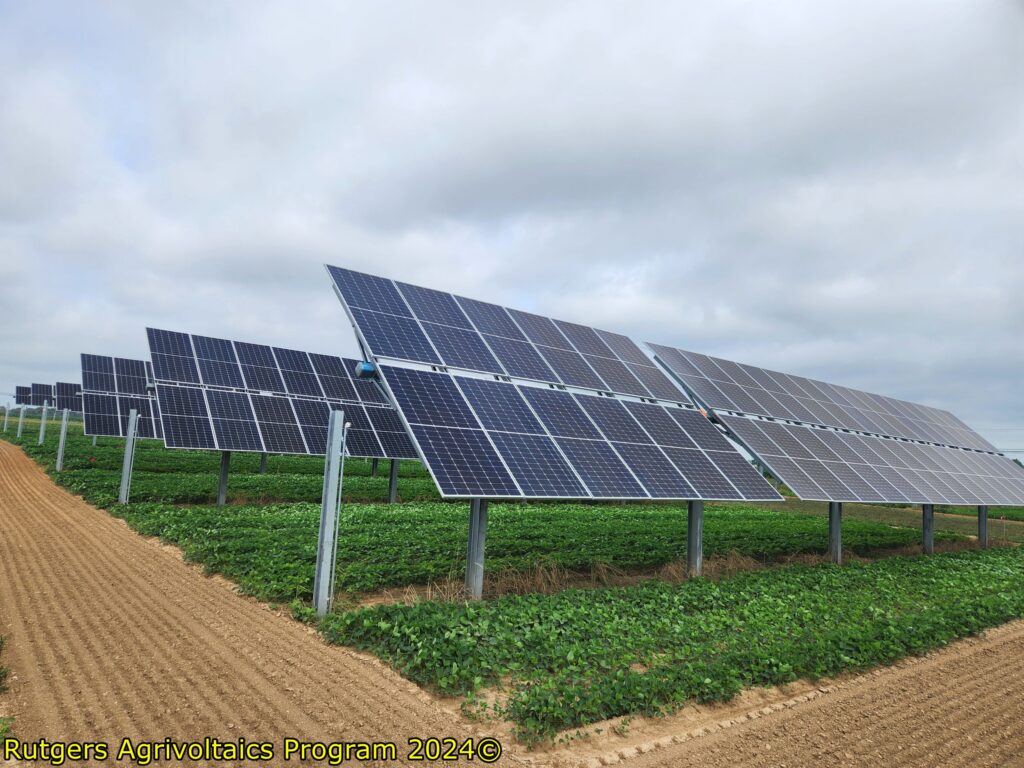Main Content
Agrivoltaic panels (AV) can have a dramatic effect on the displacement of rainfall as well as soil moisture levels in the field. Based on the time of day, the direction and angle of the AV panels, and the amount of rainfall or snow during that time the movement of water off the AV will dramatically differ.



Figure 1. Differences in soil moisture following a light rain (0.20″) that occurred overnight after the AV panels tracked back to face the morning sun in the East (on left). It is apparent the rain came directly from the west leaving part of the soil on the east side of the double array panel much drier. Note the wet spots in the soil where rainfall from the panel accumulated as it sat in in the same position during the light rain (on left). In the center and on the right, note the lack of snow accumulation beneath the double panels (center) and single panels (right) after a light snow in southern New Jersey this past winter. In this case the snow front would have come from the east.



Figure 2. Note the soil moisture on the east side of the raised bed closest to the panel following the same light overnight rainfall. Since the panel, in this case, rotates directly over the raised bed to face east in the early morning, water from the panel was displaced unevenly over the first bed. Note how much drier the west side of the same bed is (on left). A light rain occurring in the early morning as the AV panels face east. Note the wet spots developing further from the panel from an earlier, lighter rain the previous morning and the drip line currently forming at the soil line directly at the edge of the AV panels (on right).

Figure 3. Rain water accumulating in row middles in the single panel AV block during a heavy rainfall at RAREC in southern New Jersey.
Figure 4. Rainfall accumulating in the row middles in the double AV array block during a heavy rainfall occurring in the mid morning. Note how rainfall is being displaced to the east side (left side) of the raised bed closest to the AV panel verses the west side (right side) of the same raised bed where the AV panel is redirecting the rainfall.


Figure 5. The double panel AV arrays at RAREC are gapped on center with the panel post rows. Because of this gap, rainfall, regardless of panel position, will drain the the center of the panel row which will help to promote weed growth in the panel post rows if a proper herbicide program, or some other barrier, is not placed in the panel post rows (see Figure 4).
In the future the RAPS Team will be looking at the effects of the AV panels on numerous environment factors. These include rainfall, soil moisture and temperature, relative humidity, air temperature, and light.
Articles and images can be used by Permission from the Rutgers RAPS Team only – For Permission contact RAPS at shawn.sorrels@rutgers.edu.
Discover more from Rutgers Agrivoltaics Program
Subscribe to get the latest posts sent to your email.